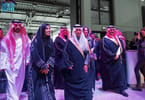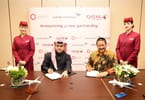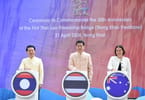US aid funds will be spent on a project that claims to be enhancing Asean’s tourism competitiveness, but critics fear it could ultimately give the meta-search portal Wego.com , financially backed by Rupert Murdoch’s News Corp, a competitive edge in the online travel market.
The site www.southeastasia.org is being developed as a critical component of the Asean Competitiveness Enhancement Project, under which US$4 million is to be channeled over 2008-2013 through the US Agency for International Development. The project is being managed by a US consultancy firm Nathan Associates Inc with RJ Gurley as project director.
According to an announcement at the recent Asean Tourism Forum, Wego.com has been chosen to provide technological support for the website, the core component of the new tourism campaign designed to attract visitors to the Asean countries. Wego.com will cover half the website development costs.
However, critics voiced their concern on the TTR Weekly website saying they fear US taxpayers money will give a commercial competitor a market advantage. Wego.Com’s CE, Martin Symes described the view as “utter nonsense.”
About US$500,000 will be spent on online marketing to build traffic on the website. That side of the account is being outsourced to Qais, a Singapore web design consultancy company, chaired by Keith Timimi, who states on his website that he “was a founding investor in Wego.com”.
Australia’s News Digital Media, the digital division of News Limited Australia, has a financial stake in Wego Pty Ltd of Singapore. NDM, in turn, is categorised under “other assets” on the website of its US-based parent, News Corporation.
In their own words, Wego executives state in recent advertisements seeking software developers: “We’re backed by News Digital Media, which is the Australian online division of Rupert Murdoch’s News Corporation.”
The campaign built around southeastasia.org is now said to be “supported” rather than “endorsed” by Asean NTOs and the website itself has been described in earlier press releases as “the official website of the Asean Tourism Association”. Major marketing campaigns were announced at the ATF to generate content to build visits to at least 500,000 a month.
Asean tourism ministries and NTOs will provide travel content, apparently free of charge, on each of their countries. Content for the doing-business component will come from Aseanta’s members.
There has been intense debate amongst Asean NTOs about the use of the name “Southeast Asia” as against “Asean”. But both governments and the private sector have taken on board the big picture benefits – an increased marketing presence that should draw more tourists to Asean countries, generate business for SME tour enterprises, and income for Aseanta. But as more information is made available about how the project was packaged and promoted, numerous questions emerge.
Although claimed to be backed by research, there are indications that use of the name SoutheastAsia was decided long before any substantive research was done. A marketing strategy paper commissioned by the ACE Project claims that “it is time for a change,” but an earlier study requested by the Asean secretariat to assess the impact of Visit Asean campaign said that it was more a question of backing the campaign with adequate resources rather than changing it entirely.
According to the current registration details, the domain name www.southeastasia.org was created as far back as May 2001 and last updated 7 December 2009. It has changed hands a number of times since its initial registration. The current registrant organisation is Nathan Associates Inc and RJ Gurley is identified as the registrant using Nathan Associates’ Bangkok office address.
The immediately previous registrant is identified as Mason Florence and the registrant organisation, TMG, operates out of Bangkok. This record specifies the last update was in October 2009. Mr Florence is the executive director of the Mekong Tourism Coordinating Office in Bangkok.
In response to questions, Mr Florence said he bought both domain names, southeastasia.travel and southeastasia.org, for personal business use.
“I was approached by ACE and after listening to what they planned, I agreed to sell southeastasia.org at the price I paid, which was US$550 for the domain name and US$25 for the transfer fee.”
Mr Florence said it was a personal matter and that he had owned both domain names for some time before discussions had taken place with executives in the ACE project.
“I felt there was more in the southeastasia.travel domain name for me to work with and didn’t feel the same way about southeastasia.org.”
The entire project is also now being touted as an “initiative” of Aseanta, which is being cited as a “partner” in the venture. However, Aseanta is maintaining a low profile. At the Asean Tourism Conference in Brunei, many of its senior board members left for the airport to catch flights home even as the project was being unveiled. At a subsequent press conference, not a single Aseanta member was on the panel to take questions.
Officially, the campaign is said to be targeted only at the UK, Australia, India, North America and Hong Kong, but Mr Gurley told an ATF media conference that talks are under way to establish a Chinese-language website. That will expand the base to a far larger audience than just Hong Kong.
Mr Gurley also sought to present the ACE project as a doing-good venture from which the US expects to get nothing in return. That contradicts USAID’s own tagline which says it “provides economic, development and humanitarian assistance around the world in support of the foreign policy goals of the United States.” Presently, promoting US business and economic interests is a major component of US foreign policy as well.
USAID projects operate under strict supervision, particularly on the matters of bids, budget spending and good governance, which includes transparency and accountability. TTR Weekly filed three sets of questions to USAID asking for clarification on aspects of ACE Project management.
To ensure Asean’s SME community is well represented on the search engine, Aseanta or ACE will have to add partners from the region, particularly Myanmar, Laos, Cambodia and Vietnam. Content will also come from the membership lists of the Aseanta member associations.
Wego.Com has promised to share referral revenue generated from the website 50-50 with Aseanta, but this is no more than it offers any of its affiliates. The split on referral revenue is presented on the Wego website (Wego Affiliated Distribution Agreement Item 4) and can be taken advantage of by anyone who runs a website. They simply sign up and download the collateral and links at no cost.
Wego’s revenue is derived from two sources – (pay per click) advertising and exit click revenue earned from commercial partners (airlines, hotels, car rental and tour operators)
Wego’s Affiliate Agreement, a downloadable PDF document, explains the revenue mechanism for websites affiliated with its search engine. It states that Wego pays 50% of net search revenue generated through an affiliate site.
This is how it works. A traveller, visiting an affiliate website, uses the Wego search engine panel to do a little comparison shopping. If he clicks through to one of Wego’s commercial partners, displayed in the search listing, it earns exit click revenue for Wego. Wego splits the revenue equally with the affiliate site, after deducting any fees, commission, or revenue shares, due to third parties.
Wego earns from its commercial partners gross search revenue based on exit clicks that are registered when a shopper views a Wego search listing and clicks through to one of partners displayed. This exit click revenue depends on the individual commercial agreements Wego has secured with partners, so the rate may differ and in some cases the exit click may not carry any revenue earning at all.
Based out of an office in Victoria St, Singapore, wego.com was launched, 8 May 2008, to replace Bezurk, a comparison shopping site operating since 2005, according to the Wego website. Mr Symes, who joined Bezurk as CEO in March 2006 from Zuji, where he was executive director commercial, continued to manage the new Wego brand and its expansion into a leading comparison shopping site for the Asia Pacific region.
Australia’s News Digital Media owned by Rupert Murdoch’s News Corporation become an investor, 15 January 2008, with NDM’s Sue Klose taking a seat on the board. She was replaced by Les Wigan, 1 January, 2010. It was also NDM’s first international investment.
Wego.Com is considered one of the region’s top meta-search travel sites on par with Zuji and Kayak. Hence the concerns voiced by competitors, who fear the ACE project, funded by US taxpayers, could ultimately enhance the competitive edge of a company that already enjoys a strategic link through investment to Rupert Murdoch’s online media empire.
One of the critics, who heads a competitive online outfit, commented on www.ttrweekly.com: “As an e-commerce business we can’t compete against this sort of funding and it loses us business. It is very unfair practice from USAID, if true. Why are they interfering in commercial fields? For the past four years we’ve been developing e-business for small businesses in the East Asia market. The comments made so far should be of great concern to the US government and US taxpayers. Will USAID be conducting a full investigation into the procedures and have USAID rules and regulations been met?”
The comment underscores concerns over USAID’s supervision of the ACE project, about which USAID has so far declined any comment despite having filed seven questions to the agency’s communications director, as early as 15 January and two subsequent questions last week. As this publication went to press, the agency emailed saying it “will reply with responses when they have been reviewed and approved.”
Wego’s Mr Symes confirmed: “We were approached by ACE to provide technical search functionality for SoutheastAsia.org in early 2009.”
The company appears to have been cited by ACE as the preferred technology partner and host of the proposed website in Terms of Reference sent out to a few companies also in early 2009.
Wego was identified during informal discussions in late 2008, between ACE executives and former Pata vice president of operations, Michael Yates and advisor and consultant, Peter Semone with reference to the set up of a website for the Asean region. It was also mentioned as the booking and search engine supplier for a similar project that was under discussion with the Mekong Tourism Coordinating Office at about the same time. The MTCO website clearly states that it is “supported by” USAID and the ACE project. In early 2009, Mr Florence, took over from former consultant and advisor to the MTO, Peter Semone, who had played a role in initial research for the ACE project. He continued to have discussions with ACE on a project that involved using Wego for web services, as well as a proposal for USAID to financially assist the annual Mekong Tourism Forum.
In separate issues, financially-strapped Asean NTOs have also seen fit to get the ACE Project consultants involved in preparing the Asean Tourism Strategic Plan for 2011-15, just about the entire future of Asean and Mekong tourism development and marketing plans is now in the hands of the US government and its consultants.
هن آرٽيڪل مان ڇا وٺو:
- A marketing strategy paper commissioned by the ACE Project claims that “it is time for a change,” but an earlier study requested by the Asean secretariat to assess the impact of Visit Asean campaign said that it was more a question of backing the campaign with adequate resources rather than changing it entirely.
- That side of the account is being outsourced to Qais, a Singapore web design consultancy company, chaired by Keith Timimi, who states on his website that he “was a founding investor in Wego.
- Org is being developed as a critical component of the Asean Competitiveness Enhancement Project, under which US$4 million is to be channeled over 2008-2013 through the US Agency for International Development.







![چين جي هائپر لوپ ٽرين: ٽرانسپورٽ جي مستقبل ۾ هڪ جھلڪ 5 سفري سياحت نيوز | ملڪي ۽ بين الاقوامي هائپر لوپ ٽرين چين [فوٽو: هائپر لوپ ٽرانسپورٽ ٽيڪنالاجيز]](https://eturbonews.com/cdn-cgi/image/width=145,height=100,fit=crop,quality=80,format=auto,onerror=redirect,metadata=none/wp-content/uploads/2024/02/180720163348-hyperlooptt-china-capsule.jpg)














